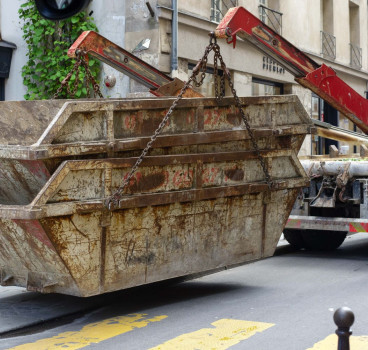Blinged-out construction for diamond buildings
Move over, gold-plated skyscrapers - there's a new player in the world of opulent construction materials, and it's literally sparkling diamonds. Yes, you read that right. Crushed diamonds are finding their way into the heart of some of the world's most high-security buildings, adding an invisible, yet incredibly potent, layer of protection.
But before you envision diamond-encrusted facades basking in the sun, think more bulletproof Bentley than ostentatious chandelier. These microscopic diamond particles, mixed into the concrete during construction, are not there for aesthetics. They're there for serious business - strength and security.
How do diamonds bolster concrete's defences? Imagine throwing pebbles at a wall. They might chip away at the surface, but they'll struggle to break through. Now, replace those pebbles with drill bits and the wall with diamond-infused concrete. The diamond particles act as microscopic roadblocks, significantly increasing the abrasion resistance of the concrete. Drilling becomes a slow, laborious process, giving security teams precious time to respond to any attempted break-in.
Where are these blinged-out buildings popping up? Naturally, you won't find them on every street corner. Diamond-reinforced concrete is primarily used in high-security applications such as data centres where they protect sensitive server equipment from physical attacks, or at military installations, where they fortifying bunkers and other critical infrastructure.
High-value art galleries and museums, helping to safeguard priceless treasures and central banks and financial institutions, have also used this material.
In 2016, the Bank of Israel made headlines by incorporating diamond-reinforced concrete into its new vault, safeguarding billions of dollars’ worth of treasures. The diamond particles significantly increased the concrete's resistance to drilling, potentially buying security personnel precious time in case of a heist attempt.
The UK's GCHQ intelligence agency (pictured) also embraced this technology in its new £1 billion headquarters in Cheltenham. Here, diamond-reinforced concrete bolsters the building's perimeter walls, deterring unwanted intrusions and protecting classified information.
But it's not just government institutions embracing this cutting-edge material. In 2019, luxury diamond retailer Graff opened its flagship store in London's New Bond Street with a facade showcasing diamond-reinforced concrete. While aesthetics was not the primary driver, the enhanced security provided peace of mind for displaying million-dollar jewels.
However, diamonds aren't just for banks and boutiques. In 2020, a data centre in the United States utilised diamond-infused concrete to protect its critical server infrastructure. With cyberattacks becoming increasingly sophisticated, physical security remains crucial, and the enhanced abrasion resistance offered by diamonds makes it a valuable defence against potential break-ins.
However, the cost of incorporating diamonds into concrete isn't trivial. Prices are several times higher than traditional mixes. But for high-stakes facilities where security is paramount, the potential cost savings from preventing security breaches can far outweigh the initial investment.
But is it worth it? That depends on your needs and budget. For a low-rise apartment building, it's likely overkill. But for a high-stakes facility where security is paramount, the enhanced protection offered by diamond-reinforced concrete can be invaluable, potentially saving millions in the long run.
Beyond bling: While the "diamonds in concrete" concept might sound like something out of a James Bond movie, it's a fascinating intersection of high-tech materials and age-old construction. It's a testament to human ingenuity and our constant quest for ever-stronger, more secure structures. So, the next time you admire a towering skyscraper, remember, there might be more than meets the eye – perhaps a hidden sparkle of microscopic diamonds keeping its secrets safe.
Additional Articles

What construction can learn from Ant colonies about logistics and site movement
If you want to witness flawless logistics, responsive movement and coordinated planning in action, you do not need to observe a hyper-automated warehouse or a cutting-edge construction site - you...
Read moreWhy everyone has a favourite skip and what it says about you
In construction, there are two universal truths – tea, of course, is essential and believe it or not, everyone - whether they are prepared to admit it - has a favourite skip. It may sound strange,...
Read more

The cultural significance of the bacon roll in UK construction
Walk onto any construction site in the UK at 7:30am and you’ll quickly discover that the most important piece of equipment isn’t a digger, a drill or a laser level. It’s a humble, foil-wrapped,...
Read more